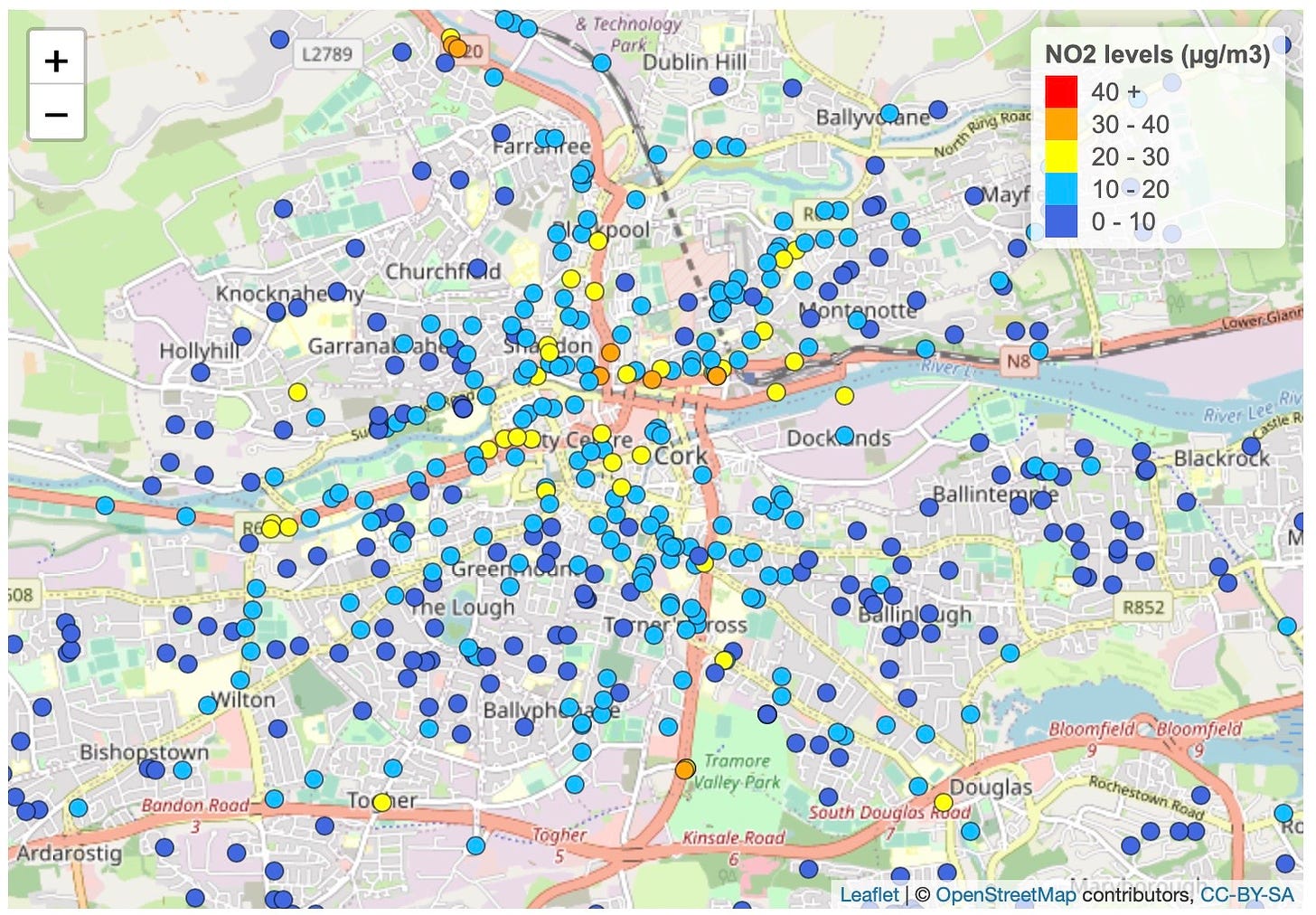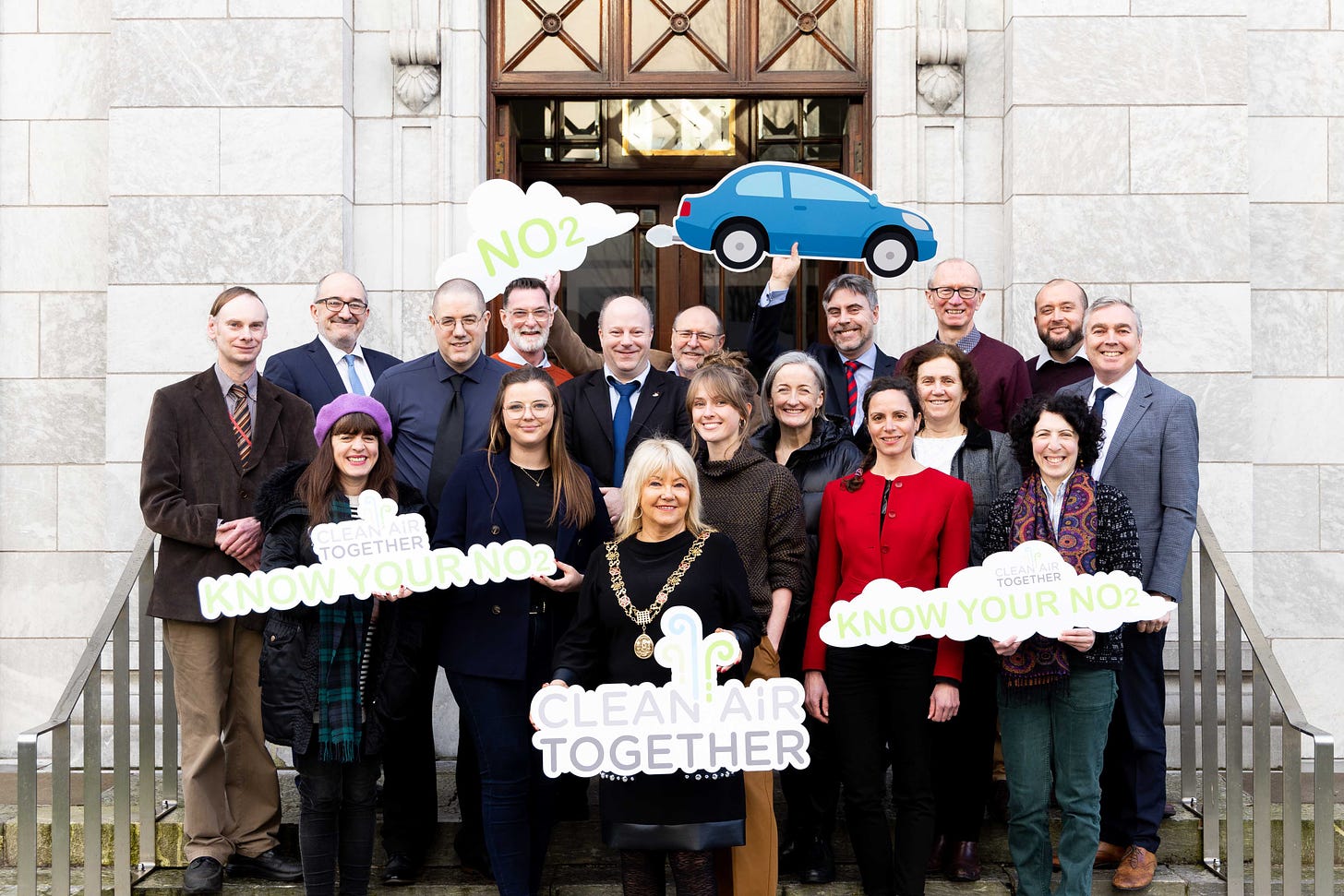Revealed: the street with the worst air quality in Cork City
700 "citizen scientists" in the city helped collect air samples to test for Nitrogen Oxide last October and now the results are in.

Cork City’s Lower Road has been revealed as an air quality blackspot, with a Nitrogen Oxide (NO2) level almost as bad as Tehran, the city with the third worst air quality in the world.
However, poor quality samples in Cork are in the vast minority, with the city’s worst areas for air quality clustered alongside roads that experience heavy traffic.
The EPA and An Taisce’s Clean Air Together citizen science project saw 700 volunteers place a sampling tube outside their homes or other places of interest for a period of four weeks last October, to measure rates of NO2.
The results were announced at Cork City Hall Wednesday evening.

One sample taken on the Lower Road gave a reading of 39.46 μg/m3 (microgrammes per metre cubed), the highest level of NO2 in the city.
NO2 is a harmful gas connected to the burning of fossil fuels by engines. It is connected to respiratory complaints including asthma and chronic lung disease in humans.
International research shows that Shanghai in China is the worst in the world for NO2 emissions, with an average of 41.6 μg/m3, adjusted per capita, recorded, while Moscow is in second place with 40.2 μg/m3.
The highly localised Lower Road sample is just behind Tehran, the third worst city in the world with an average of 39.8μg/m3, and St Petersburg, the fourth worst at 38.3μg/m3.
Some other Cork streets and roads with high traffic volumes also fared badly.
MacCurtain St, the N20 all the way out as far as the Commons Road, and the South Link Road outside Tramore Valley Park were Cork city’s other NO2 blackspots, the Clean Air Together research reveals. They all had readings of over 30 μg/m3.
However, only 1% of samples throughout the city had levels between 30-40 μg/m3 and nowhere had levels above 40 μg/m3.
58% of samples had between zero and 10 μg/m3, while 35% of samples had between 10 and 20 μg/m3.

Researchers stressed that the Clean Air Together data is only able to provide a “snapshot” of the city’s air quality from last October.
Particulate matter, another important factor in airborne pollution, was not measured during the Clean Air Together project.




